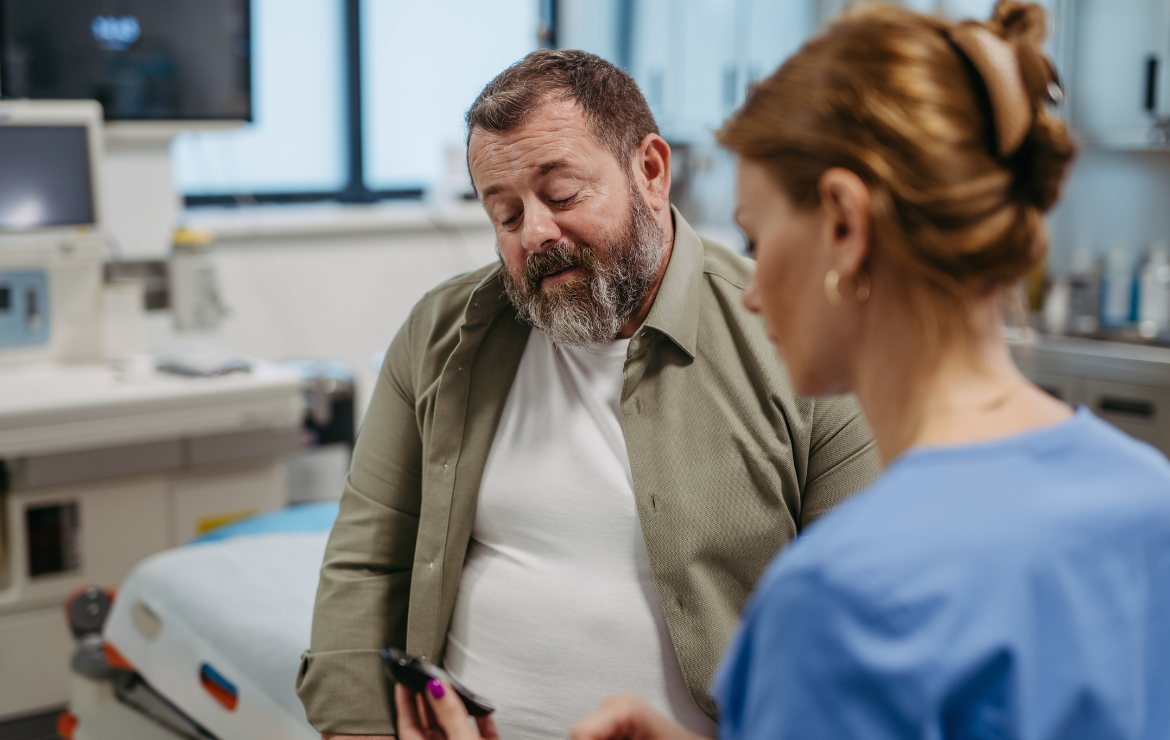Hey Siri, Help Us Care for Injured Workers Remotely

By: Nikki Jackson, CPCU, ARM, CDMS
 On a hot, summer morning in Orlando, I had the privilege of gathering with industry professionals to discuss remote care and some of the latest tech trends in a session entitled, “Hey Siri, Help Us Care for Injured Workers Remotely Using Technology” at the WCI conference. For those that may be unfamiliar, the Workers’ Compensation Institute sponsors a WC educational conference annually. This conference is one of the largest in our industry and brings together WC professionals from across the country.
On a hot, summer morning in Orlando, I had the privilege of gathering with industry professionals to discuss remote care and some of the latest tech trends in a session entitled, “Hey Siri, Help Us Care for Injured Workers Remotely Using Technology” at the WCI conference. For those that may be unfamiliar, the Workers’ Compensation Institute sponsors a WC educational conference annually. This conference is one of the largest in our industry and brings together WC professionals from across the country.
Although non-industrial remote healthcare technology is growing (think artificial intelligence, platforms, wearables, etc.), the data released from the WCRI shows the workers’ compensation industry is not as willing to embrace technological advancement. This may be because of the familiarity and normality associated with long-established methods, the fear of the unknown, HIPAA compliance concerns, billing, etc., but through education, our industry can learn to recognize these advancements offer the quality care injured workers deserve and in some cases, may be preferable for many stakeholders. As a result, this session discussed some of the technology which may help the workers’ compensation industry advance in remote practices.
For industry professionals, many of the advantages and disadvantages of telerehabilitation are well understood and rather intuitive. Advantages include increased access to care, reduced travel time and associated expenses, flexibility, etc. On the other hand, disadvantages include technology barriers, equipment needs, and the need for physical evaluation in some cases. But what about the ‘buy-in’ of telerehabilitation from the perspective of the patient and other stakeholders?
To help answer the question about ‘buy-in,’ we kicked the session off with Steve Kerschke, PT, to share the results of a study he was involved with, which included workers’ compensation nurse case managers and their perceptions on telerehabilitation for spinal cord injuries. The first part of the study asked the nurses to evaluate the quality and effectiveness of clinic-based vs. telerehabilitation care. The nurses assigned higher ratings to all but one item when considering clinic-based physical therapy services rather than synchronous telerehabilitation physical therapy services. The one area was “works when person cannot exercise independently.” When questioned about convenience and access, the nurses ranked every telerehabilitation category higher than clinic-based physical therapy. What’s interesting is how the nurses ranked the factors of most importance. The most important factors were clinician expertise and travel convenience. These factors were followed by degree of physical disability and speed of initial treatment initiation.
The study demonstrates synchronous telerehabilitation remains unfamiliar to a majority of WC case managers because of physical contact restrictions imposed in response to the COVID-19 pandemic. Only about one in four case managers affiliated with healthcare payors for workers’ compensation claims reported being very familiar or extremely familiar with synchronous telerehabilitation, whereas about eight of every nine case managers affirmed that level of familiarity with clinic-based rehabilitation. Thus, despite decreased availability of clinic-based physical therapy services forced by COVID-19 restrictions and promotion of telerehabilitation as a viable alternative service delivery model (Lee, 2020; Stein et al., 2020; Turolla et al., 2020), most case managers remain unfamiliar with the latter option.
Extant research and professional training appear insufficient to ensure case managers and other professionals recognize that people derive comparable physical therapy benefits for many aspects of clinic-based and synchronous telerehabilitation services. Correlation findings from the obtained dataset further support the importance of educating case managers about service delivery options for people likely to benefit from outpatient physical therapy. Specifically, respondents reporting familiarity with synchronous telerehabilitation recommended it to their clients more frequently than those without such familiarity.
We then transitioned further into technology. I’m sure many of you have some familiarity with 5G, but it’s the latest iteration of cellular technology engineered to greatly increase the speed and responsiveness of wireless networks. So, the data transmitted over wireless broadband connections can travel at multigigabit speeds that far exceed wireline network speeds and offer latency of below 5 milliseconds (ms) or lower. In simpler terms, it’s really how much time it takes for a data packet to travel from one designated point to another. In the telehealth space, this technology enhances communication and delivery platforms. Zoom is by far the frontrunner in the telehealth platform space but other major players include EHR Provider, FaceTime, Skype, WebEx, Teladoc, Vidyo, Intouch, Epic MyChart, and other internal propriety systems. In addition to 5G and telemedicine platforms, Steve and his peers are seeing the continued development of wearable technology used to help monitor patients remotely. For example, using wearables to monitor an injured worker’s movements during their physical therapy exercises. And there’s even non-wearable, AI technology in existence and developing that can capture the necessary data from a patient’s smartphone. This technology also prompts necessary corrections while collecting data that can be shared with the therapist.
About MTI’s Telerehabilitation Solutions
MTI delivers personalized, interactive, on-demand care for patients. This virtual option provides telerehabilitation engagement that achieves physical and occupational therapy intended outcomes. The sessions are user-friendly and provide personalized one-on-one therapy sessions with a licensed physical or occupational therapist. In addition, we offer customized physical therapy from an extensive exercise video library.
Additional features of our telerehabilitation program include measurable screening tools, compliance monitoring, and collaboration. Up to six people may be present during each telerehabilitation session, allowing for greater clinical collaboration and continuity of care.
The telerehabilitation sessions are HIPAA compliant with encrypted end-to-end security and privacy. The benefits of telemedicine include increased access to care, decreased patient anxiety and absenteeism, elimination of transportation-related expenses, reduced risk of infections, and more.
MTI Differentiators:
- MTi360™ unified care platform
- 18% decrease in claims duration utilizing MTI360 care technology
- 1-3 business days TAT from RX to evaluation
- 20% decrease in injured worker no-shows integrating transportation, translation, and physical therapy services
- Real-time injured worker no-shows and cancellation status updates
- Automated ODG benchmarks
- Connected Care Cost Containment Program
- MD/PT communication
- Home Recovery Plan











